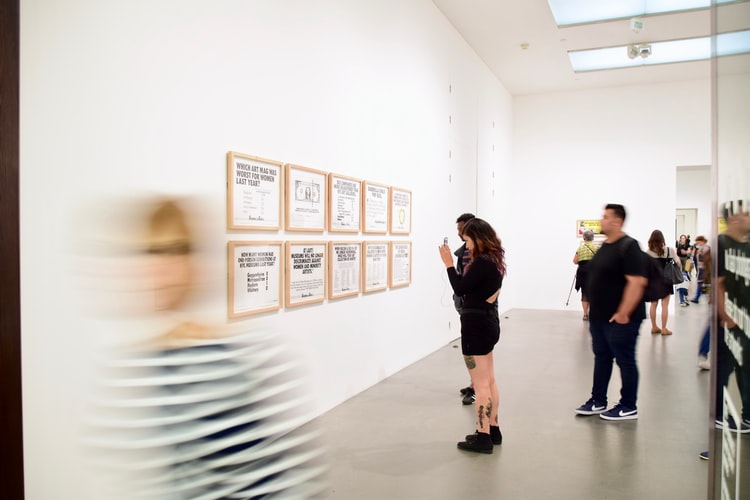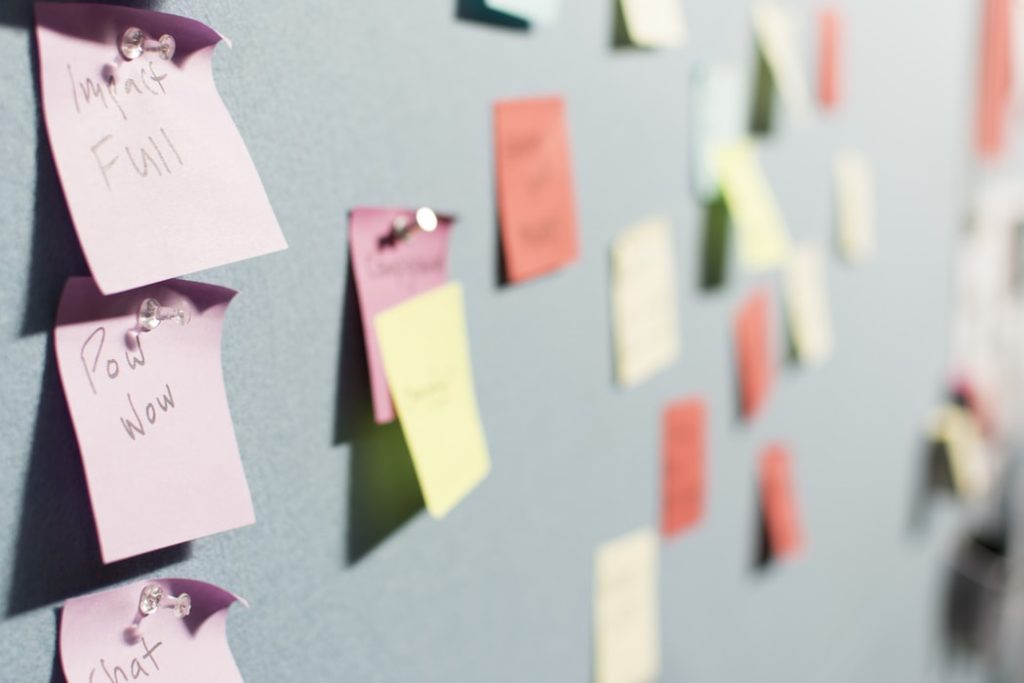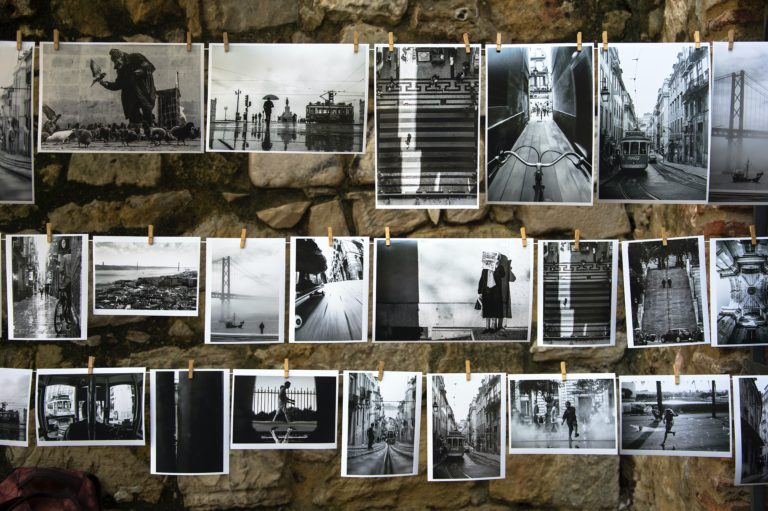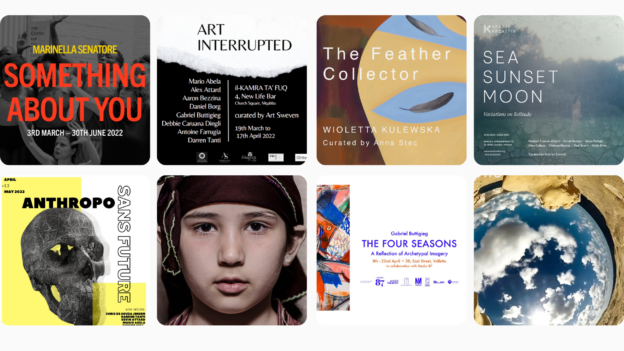How to: plan your first solo exhibition

As an upcoming artist, planning your first solo exhibition might be daunting and exciting in equal measures. It’s certainly a very significant and memorable step in your artistic career. There are a lot of factors to take into consideration in order to produce a successful first solo show. It can feel a little overwhelming if you’re going through this process for the first time. How do you even get started? However, putting your work out there and watching your audience appreciate what you created is greatly rewarding. In addition, a well-planned exhibition can help you reach several goals as an artist and launch your artistic practice to new heights. Like so many other things, it’s most challenging the first time round and it will probably get easier with experience. So I’m going to walk you through some of the most important action points involved in successfully planning and producing your first solo show.
1. Think about why
First things first. Why do you feel the need to have a solo show at this point? What do you want to get out of it as an artist? How can a solo show help you achieve your artistic goals? Answering the ‘why’ question will help you define the purpose of your solo show. Or if you even need to be planning one right now, after all. It will make it easier to take certain decisions later on in your planning process. Your reasons could be plenty and these vary from one artist to another. For instance, are you looking for greater exposure on your local scene? Does your work speak to a current societal issue and should therefore be presented at this point? Are you looking to get gallery representation? Or is this exhibition meant to introduce your work to potential buyers?
2. Start planning well ahead
Allowing ample time to plan ahead of your chosen date is extremely important. At least a few months. It allows you to flesh out your exhibition concept, gather inspiration, and make sure that you don’t miss out on any essential features. You want to have a well-rounded and coherent plan. Your first solo exhibition is not something that you should plan in a rush. In addition, if you’re planning to apply for funding, you will be expected to think ahead and submit your concept according to applicable deadlines. So keep an eye on that calendar!

3. Budgeting
The idea of thinking and talking money scares many artists. Yet it’s highly important. Without a realistic and clear budget, your chances of producing a successful show are quite limited, even if your work is great! The good news is that you don’t need a huge budget to deliver a successful show. Make a list of what you need in order of how essential it is to your project. These could be an exhibition space, rental of equipment and transportation of artwork, for example. Which of these items are readily available to you? Which ones can you do yourself and which ones will you need to pay for? Gather some quotations, work out the maths. Do you have all the money you need? Great! If not, which items on that list can you let go of? Or which funding channels could be available? Is there any way you could get sponsors or other forms of support?
4. Don’t go it alone – work with a curator
Curators are actually trained to support artists in advancing their practice and creating a successful show. They can assist you with looking for a suitable venue, taking care of logistics, applying for funding, optimising your exhibition concept, writing your exhibition text, broadening your audience and marketing your project, for instance. They can act as a sounding board against which to test out your ideas. They alleviate a lot of pressure from your shoulders so that you can spend more time and energy focusing on your artistic work. Basically, they are a valuable partner to have throughout this process. Work with one if you can. Do you have anyone in your network who could curate your show? If not, why not send out an open call? (And don’t forget to budget for this service, unless your curator is happy to offer their services free of charge).
5. Selection is key!
You want to make sure that your exhibition tells a clear and well-narrated story. Usually this means that not all of the work you’ve ever made is going to be included in the show. Selection is key. Are you looking to highlight your latest body of work? Which work are you most proud of? Have you been working with a specific theme? How many works can your venue realistically accommodate? This is also a process where a curator can be of great help.

6. Marketing and promotion
Another advantage to planning ahead is having enough time to promote your show appropriately. Think about who you want to come and see your work. Make sure to send a personalised invite (well enough in advance) to important guests. Would you like certain gallerists to attend, for instance? Create a Facebook event, make use of your social media platforms. Post some behind-the-scenes sneak peeks. Create an event poster. Think about whether you will need printed material or whether you will engage your potential audience completely online. Get family and friends to spread the word and block the date on their calendar. Will you hold an official opening event or not? What about getting featured in the media? In this case, you might want to try and get in touch with journalists or bloggers who cover art and culture.
7. Exhibition setup
This will largely depend on your venue. Therefore it’s important to go and see multiple spaces before you make a decision. However, there are some rules of thumb that are generally applicable to any venue. Hang your work at eye level (150cm) unless you have a specific reason to do otherwise. Make sure each work is well-lit and not hanging too closely to other works. Group works that go well together. Think about how you want your audience to navigate the space. Which path do you want them to follow? How will you create this experience for them? Are you planning to sell your works? How will your audience know they can buy the work and how much it costs? The setup is almost as important as the work itself. A pleasant viewing experience makes all the difference!

8. Documentation
Since your first solo exhibition is a temporary event, you want to make sure that your final outcome is well-documented. This is highly important for your portfolio and for your credibility later. It’s (almost) no use investing time, energy and money and having nothing to show for it later. Make sure to have good-quality photographs taken of all the works installed in the space and of people attending your event. Think about whether you would like to have written research material accompanying your exhibition, such as a curatorial essay. This could expand further on your subject matter and its significance. What about posters and leaflets (digital or physical)?
9. Next steps
The benefits of having a first solo show should outlast the event itself. Ideally, you start thinking about the next steps at the same time as you start thinking about your ‘why’. So what’s next? Be proactive and don’t lose the momentum. Don’t forget to update your CV and portfolio with all the relevant exhibition documentation straightaway. Follow up on any new contacts that you talked to at your show. Continue promoting your work and your show even after the end. Take this moment as an opportunity to reflect on your achievements and on where you want to end up next. How about going international and taking your show abroad?





Responses